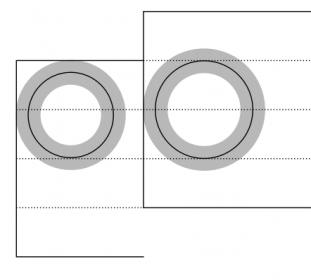@alibi_18 thank you for clarifying your point/view. You mention that this is explained in the rules, but neither I, nor anyone else participating in this discussion seems to see it. Can you please send me the link or chapter?
A dressage ring however, ,is set 20 meters wide. The track is not 20 meters wide, the rail is. So a 20 meter circle fits INSIDE that 20 meter diameter. The 10 meter radius would be from the center to the rail,( and ideally the outside of the horse/riders stirrup, who one hopes is near the rail at the points where the circle touches the track).
Regarding 15 meter circles: the 1/4 line is actually 15 meters from one side, and 5 meters from the other. Riding a 15 meter circle is the same as riding in a space 15 meters wide, so imagine the little white fence is on the 15 meter mark. To ride the 15 meter circle you stay just inside the imaginary white rail (to be perfect). The 7.5 meter radius would be from the center of the circle to the outside of the horse for the entire circle and you stay inside the 1/4 line.
In the test that requires you to get to the 1/4 line for the leg yield you have to ride a slightly bigger half circle so your horses spine gets to the 1/4 line. If a rider rides a true half 15 meter circle and ends up slightly inside the 1/4 line it increases the degree of difficulty, so they can still get a very good score if done well, but not a 10. (If they make the half circle bigger than the quarter line however, then they make both movements easier, and so won’t score as well even if done well).
@Gamma your new picture shows how much bigger the A & C circles would be if you think the horse’s spine gets to the 1/4 line rather than staying inside. it makes a sizable difference. Thank you for your effort and artistry in helping me explain my thoughts!
I didn’t know a discussion on circles would be so exciting…only dressage riders could get this excited about circles!



